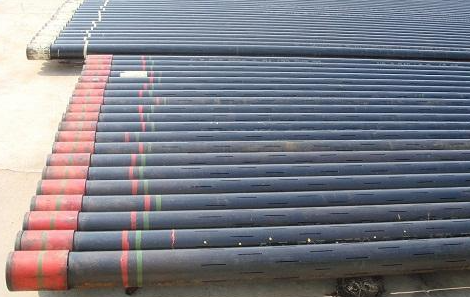Slotted casing is a thin slit cut into the casing and tubing body to keep formation sand out of the screen to achieve sand control. It has a simple structure and low cost, and can be used for completion and sand control of curved wellbores such as horizontal wells. As an important filter device, slotted casing plays an irreplaceable role in industrial production. Its structural characteristics determine its filtration effect and service life. Therefore, an in-depth understanding of the structural characteristics of the screen tube is of great significance for improving production efficiency and reducing costs.

Basic structure of slotted casing
Screen shell: The screen shell is the main part of the slotted casing, usually made of metal or plastic. Its main function is to fix the screen and connect the inlet and outlet.
Screen: The screen is one of the most critical components of the slotted casing, and its quality directly affects the filtration effect of the screen. Common materials include stainless steel wire, copper wire, steel wire, etc.
Connector: The connector is used to connect the inlet and outlet to the screen housing, usually made of metal or plastic.
Elastic slotted casing: The high-strength elastic slotted casing uses a single layer of thick-walled API standard casing as the base pipe, and the sand control filter unit is installed into the stepped hole of the base pipe through welding to form an overall sand control structure of a single-layer pipe. The special elastic fiber sand-proof material has the ability to self-unclog, and the sand-proof particle size can be adjusted as needed. It can prevent finer formation sand, with a minimum thickness of 0.1mm. The overall strength of the slotted casing is high and the sand-proof effect is good.
Structural characteristics of different types of slotted casing
Strip slotted casing: Strip slotted casing is usually composed of multiple strip-shaped sheets arranged in parallel. Each sheet is evenly distributed with many small holes, and these small holes make up the entire filtration area. The strips are nested within each other to form a continuous and complete filtration area, thereby achieving efficient filtration.
Circular slotted casing: A circular screen tube usually consists of a cylinder and two end caps. There are many small holes on the cylinder for filtering materials. The end cover has an inlet and outlet for introducing and discharging materials.
Mesh slotted casing: Mesh slotted casing is woven from many filaments and its structure is similar to a mesh structure. This kind of screen tube has a larger filter area and higher flux.
Application fields of different types of slotted casing
Strip slotted casing: Strip screen is usually used in liquid filtration, such as water treatment, oil field water injection and other fields.
Circular slotted casing: Circular screen tubes are usually used in gas filtration, such as air purification, automobile exhaust treatment and other fields.
Mesh slotted casing: Mesh screen tube is usually used in high temperature, high pressure and highly corrosive media.
Conclusion
To sum up, different types of screen tubes have their own unique structural characteristics and application fields. When selecting screen tubes, comprehensive considerations should be made based on actual needs and material characteristics to select the most suitable screen tube type.






 English
English Español
Español بالعربية
بالعربية











 Phone :
Phone :  Whatsapp :
Whatsapp :  Email :
Email : 


